Why local SEO is thriving in the AI-first search era

Generative AI is changing how users search. With instant answers from AI Overviews, ChatGPT, and other tools, many searchers no longer need to click through to websites – especially for informational queries.
But this change has resulted in many websites seeing declining click-through rates despite rising impressions.

However, there’s a notable exception: local search.
Businesses that depend on local intent are seeing steady performance, with no signs of the “alligator graph” (rising impressions and falling clicks) that plagues other categories.

This article explains why local content is uniquely resilient in the age of generative AI – and how you can capitalize on this by strengthening your local SEO efforts.
1. Large language models don’t deliver a good local search experience
Try searching [pizza near me] in ChatGPT or another AI platform.
The results are vague, lack images, and often list places that aren’t even nearby.
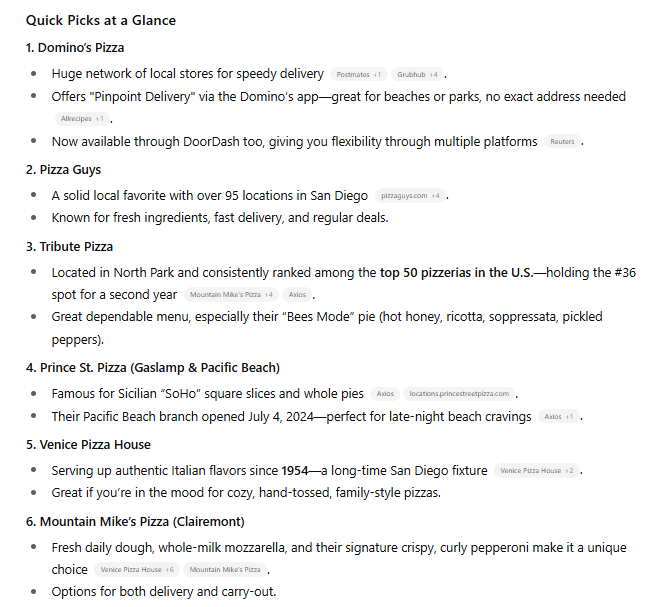
There are no maps, no phone numbers, and no real-time context.
By contrast, search the same query in Google Maps.
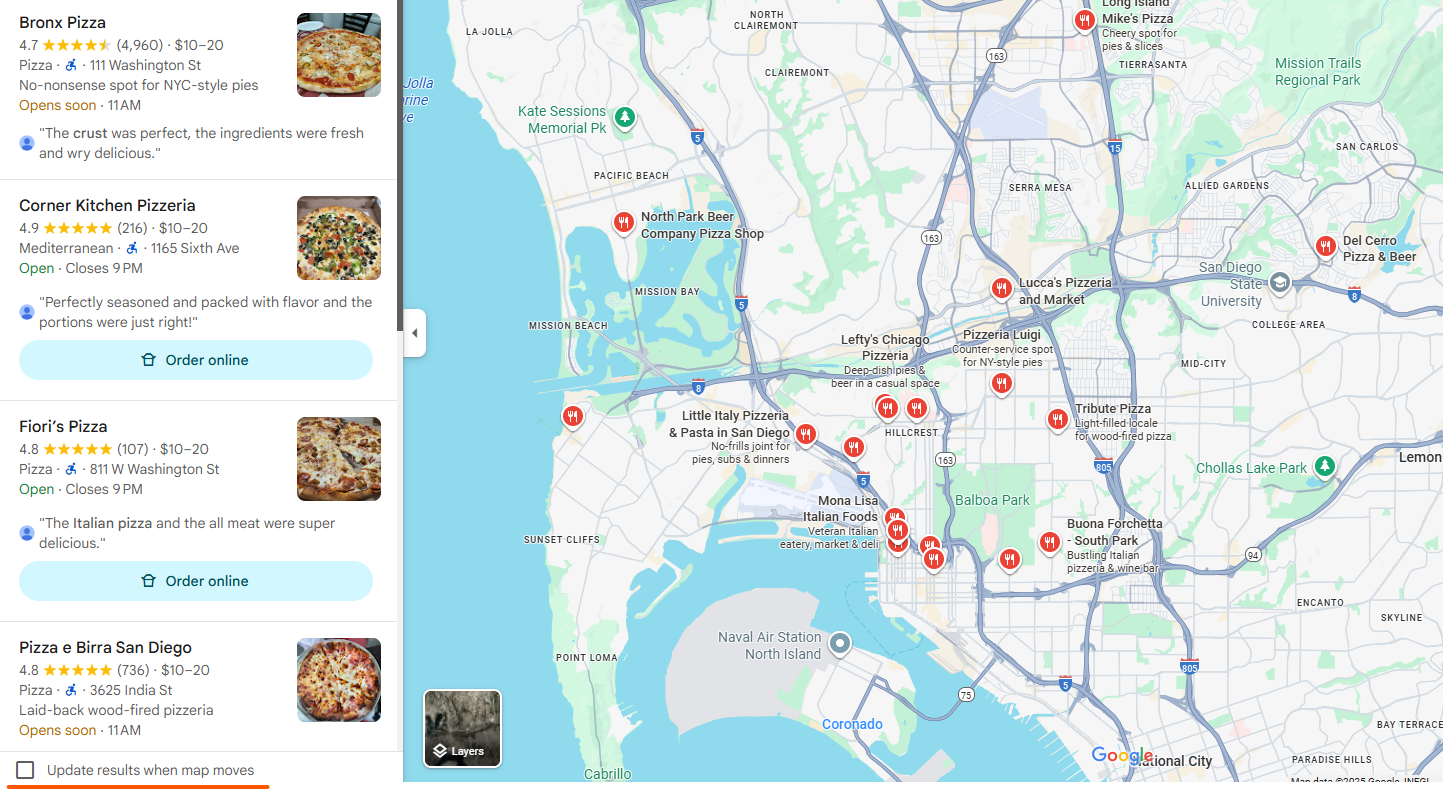
You get a rich, visual interface with accurate listings, reviews, directions, call buttons, and real-time location tracking.
AI tools don’t offer a comparable user experience for local discovery. Why?
2. AI platforms lack reliable location awareness
Generative AI doesn’t know where you’re searching from – at least not without you telling it explicitly. That lack of geolocation leads to generic, irrelevant answers.
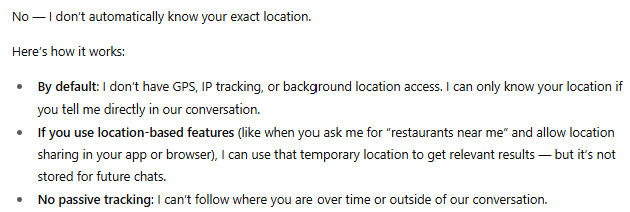
For local search, proximity is a key ranking factor, so this is a critical weakness.
While privacy advocates may welcome the anonymity, users looking for nearby services don’t benefit from extra friction.
Most searchers won’t bother entering their exact address just to get AI-powered suggestions. As a result, traditional search still wins for queries with clear local intent.
Even if AI tools eventually solve for location accuracy, they still face another barrier.
3. Local search involves real-world intent
Local searches often lead to phone calls, in-person visits, or service appointments—not just website clicks. Users want to talk to someone who can fix their roof, unclog a pipe, or deliver a pizza. AI can explain how to do these things, but it can’t actually do them.
This is why Google rarely includes AI Overviews in local search results. In fact, AI Overviews are less likely to appear for local queries than for informational ones, a recent Ahrefs study found.
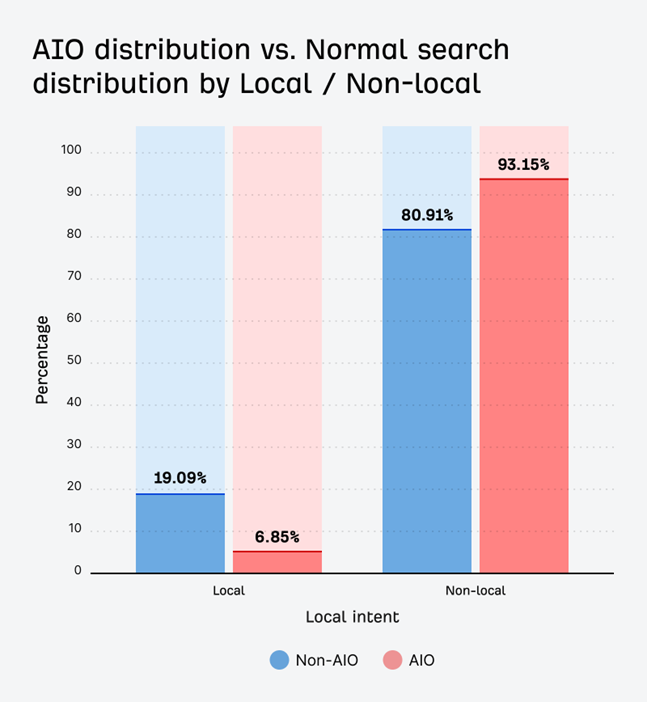
Even when AI attempts to answer, it leans heavily on the same sources traditional local SEO relies on.
4. AI results still depend on local SEO data sources
Ask Perplexity or ChatGPT for a local service provider and you’ll often get:
- A Yelp “best of” list
- Google Business Profile data, including review counts and ratings
- A Google Maps link for directions
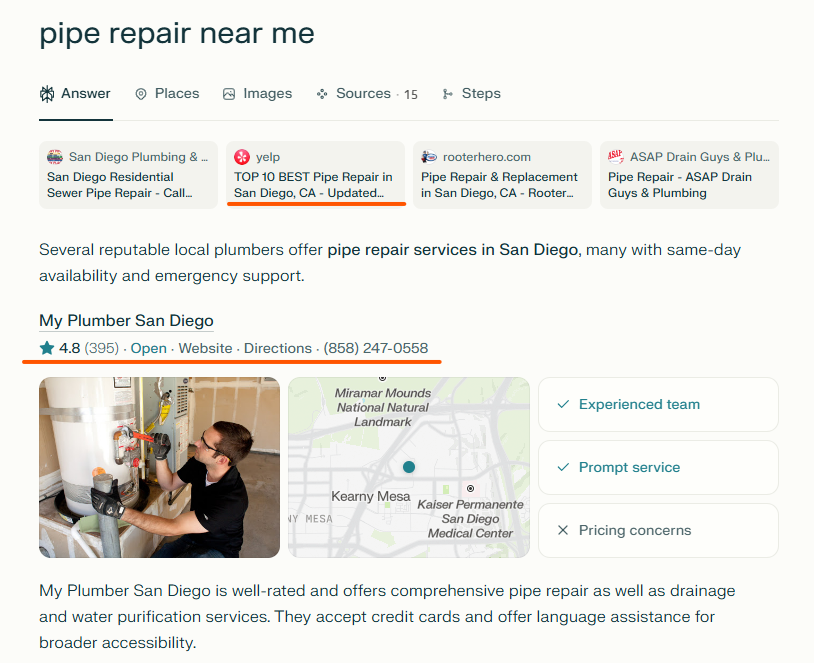
These models don’t generate original local knowledge. They aggregate and summarize structured data from platforms like Google, Yelp, TripAdvisor, and others.
As Lily Ray noted in a recent analysis, Google’s AI Mode cites links to Google Business Profiles much more frequently than linking to external websites.
This means all the work on local listings, location pages, and service area pages will continue, even if users decide to switch search platforms.
In short, all the local SEO fundamentals – reviews, directory listings, business profile accuracy – still matter. Arguably, they matter even more in the AI era.
5. Local SEO is built for a fragmented search future
As search behavior evolves across platforms, it’s more important than ever for businesses to be discoverable everywhere.
This is the foundation of Search Everywhere Optimization.
Local SEO has always embraced this mindset. Success means showing up across a wide network of data aggregators, map apps, industry-specific directories, and review platforms.
These touchpoints are exactly where AI tools look for signals.
If your local business is consistently represented across these platforms, you’re already aligned with how AI gathers and validates information.
4 actionable steps for maximizing your local presence
To maintain and grow local visibility, prioritize these tactical steps:
- Stick to proven SEO tactics for mid- and bottom-funnel queries. AI is either ineffective or absent in these areas.
- Ensure consistency across all relevant local platforms. This includes your business name, address, phone number (NAP), hours, and categories.
- Complete every local profile fully. Fill in all available fields and add rich content – photos, service descriptions, FAQs, and menus.
- Continue generating reviews. LLMs depend on fresh, authentic, user-generated content. Regular reviews help your business stand out in AI-powered lists.
Key takeaway
Local SEO isn’t just surviving the generative AI shift – it’s thriving. Investing in visibility across platforms, accurate business data, and review generation will remain discoverable no matter how the search landscape evolves.







Recent Comments